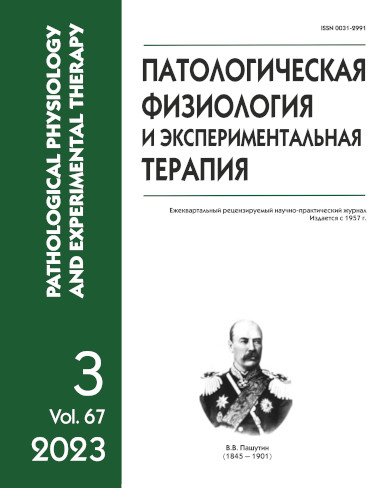Ethological and immunological interrelations in experimental desynchronosis under fluorescent lighting conditions
Abstract
Aim. To identify changes in immune status and behavioral activity during experimental desynchronosis under conditions of fluorescent lighting. Methods. Light desynchronosis was created by exposing guinea pigs to 24 hr of fluorescent light. To analyze the ethological status, we used an open field test, a Morris water maze, and the concentrations of IL-4, IFN-γ, melatonin, and cortisol in the blood were measured. Results. During experimental desynchronosis under fluorescent light, blood IL-4, IFN-γ decreased and melatonin increased. There was an increase in the concentration of cortisol on days 10, 20 and 30. Correlation analysis revealed that in experimental desynchronosis, anxiety and depression of research activity increased as the concentration of melatonin decreased and as the concentration of blood cortisol increased. Conclusions. Changes in the ethological and immune status during experimental desynchronosis under fluorescent light progress as the concentration of melatonin decreases and the concentration of cortisol in the blood increases.






